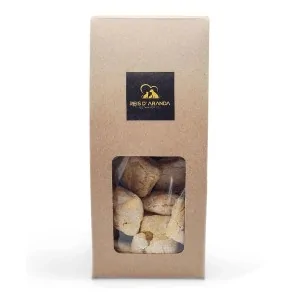Its name says it all: the Vienna blue rabbit comes from Austria. Not only is it beautiful with its shiny blue-grey...
DWARF RATS
WHAT ARE DWARF RATS LIKE?
Dwarf rats are not a commonly bred variety, and it is perhaps their cute appearance and small size that makes them such loyal fans, but we must study their genetics carefully and purchase them from a responsible breeder to avoid a number of problems.
The gene for dwarfism is recessive and must be inherited from both parents to produce a dwarf rat. Dwarf rats have smaller legs and shorter tails than their normal siblings and also stop growing earlier.
Dwarf rats tend to have a sweet temperament and are more docile when held than their normal counterparts, although some may show a more "typical" and energetic character. They usually grow to about 1/3 the size of a normal-sized rat.
In comparison, they maintain the size of an 8-week-old baby throughout their lives.
THE RAT DWARFISM GENE
The gene for dwarfism in rats is recessive, which means that it takes two copies of the gene to have one. They are 1/3 the size of a "normal" rat and are usually extremely tame and active.
CONS OF OWNING A DWARF RAT
The most common health problem in dwarf rats is obesity. If their weight is not controlled and maintained, they can easily put on weight and develop various associated diseases such as circulatory, joint, liver, kidney and heart problems.
Obesity is, after cancer, the most common disease in rats, mostly caused by owners who do not know how to properly manage their pet's diet and "don't have time" to help them exercise, which has become almost an undesirable fad and has given this type of neglected rat the nickname "soft potato".
Their small size makes dwarf mice more fragile than normal-sized mice. They are better for families with older or more responsible children or simply for adults, they are also more sociable with their peers, although we can find aggressive or dominant specimens, in which case we will avoid them living in community and we will keep them alone in their enclosure, for their safety and that of the rest of the rats living in the house (especially if the aggressive and/or dominant rat is a standard rat).
ADVANTAGES OF DWARF RATS
Dwarf rats are ideal for small houses where a large habitat is not possible, as the space requirements of dwarf rats are much less than those of standard rats.
The minimum habitat size for two standard rats is 45 cm x 61 cm x 61 cm.
The minimum habitat size for two dwarf rats is 40 cm x 61 cm x 45 cm.
The investment in accessories, bedding and food is also a little less, as we can opt for the smaller size, and the amount of food per day is also less than that required for a normal rat.
CONCLUSION
Dwarf rats are an excellent option for all fans of these incredible pets who have a small house or who want an animal with a "baby look" that will keep that look throughout its life, but we must never forget their physical fragility and that we must not allow children who are too young to play with them or who are not trained to handle an animal of this type (they are rough, they fall down...) as we could have an unpleasant experience.
If you want to buy a well-socialised and healthy dwarf rat, always opt for a family breeder that registers its breeders and pedigrees to have proof of inherited health and the percentage of inbreeding.
Leave a comment
Log in to post comments
















